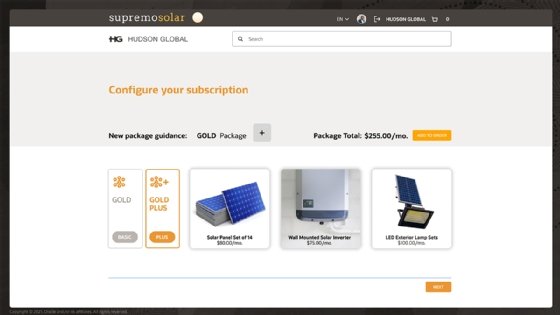
Fotolia
Oracle CX adds subscription management, 3-D ad measurement
Oracle adds deeper subscription support for B2C and B2B users to its CX platform, as users look to tie renewals, billing and self-service to commerce revenue.
As B2B and B2C companies that survived the pandemic build on the automated, touchless revenue streams they've built in the last year, one model looks to be popular: Subscriptions. They can be applied to everything, from Netflix, phone plans, service and maintenance contracts, to cloud software and recurring deliveries.
Oracle CX released today a handful of features to more easily set up subscriptions and run analytics on subscriptions in process to predict which customers might not renew so they can be given attention and encouraged to re-up their subscriptions. Oracle also released self-service tools for users to give customers the ability to sign up, cancel or suspend subscriptions during times such as production lulls or holiday periods.
Features like these are part of a larger trend in which tech vendors have begun to connect subscription tools to e-commerce systems. E-commerce platforms handle payments, but they aren't necessarily equipped to handle complex B2B pricing and billing as well as customer-controlled renewals and upgrades, said Forrester analyst Kate Leggett.
"Products are being sold more and more as subscriptions," Leggett said. "Media, entertainment, even heavy equipment -- you can buy jet engines from BMW and Rolls-Royce as 'power by the hour' usage. Caterpillar sells heavy machinery by usage -- it's basically a rental model. Subscriptions allow you to ramp up and ramp down usage in a flexible way."

Oracle Moat measures 3-D game ads
Oracle Advertising's Moat digital ad measurement and analytics platform added 3-D ad tracking for in-game ads, spending for which is predicted to reach $56 billion by 2024 according to research firm Omdia.
Measuring ad impressions in 3-D game environments has been an ongoing technology challenge, said Nate Skinner, global senior vice president of marketing for Oracle Advertising and CX. That's because it's difficult to distinguish between the game characters controlled by humans and those generated by the game itself when "looking" at an ad.
Game-controlled characters are considered general invalid traffic (GIVT), much like crawlers are with web ads. Sometimes, bot traffic -- which advertisers refer to as sophisticated invalid traffic (SIVT) -- can fraudulently inflate impression numbers on web pages. That can happen in games, too. In both environments, both types of invalid impressions can artificially inflate ad costs if not monitored, Skinner said.

Moat's 3-D game tool can filter out in-game GIVT and SIVT to give users a more accurate measurement of how many actual humans see their game ads. Moat connects to popular in-game ad platforms such as Anzu, Bidstack, Adverty and Frameplay to measure ad reach. Games containing ads for which Moat can measure impressions span mobile phone platforms, laptops and home systems such as Microsoft Xbox, Sony PlayStation and Nintendo Switch.
Game advertising measurement was previously either non-existent or primitive at best, Skinner said. Companies such as Pepsi might have bought ads in popular games for branding purposes only -- just to be there, without really knowing their actual reach."Before now, you really couldn't do measurement in a 3-D environment," Skinner said, adding that it's not just gamers who see in-game ads, but also fans of popular gamers who watch online videos of them playing games.
"Twitch did a lot to bring this to life," Skinner said. "There's entire groups of humans watching people play online, and all these 3-D ads are being seen by [those] people."
The Oracle CX features were released in conjunction with its quarterly update, are available now, and come at no additional cost to current subscribers. The update also included predictive lead tools for Eloqua and Responsys; B2B and B2C personalization tools in Oracle Infinity as well as Oracle Content Management; and B2B service knowledge management and asynchronous messaging tools for Oracle customer service. For field service users, a new logistics integration feature shows technicians in the field a customer's contract entitlements -- services, rates and discounts -- at a glance.







